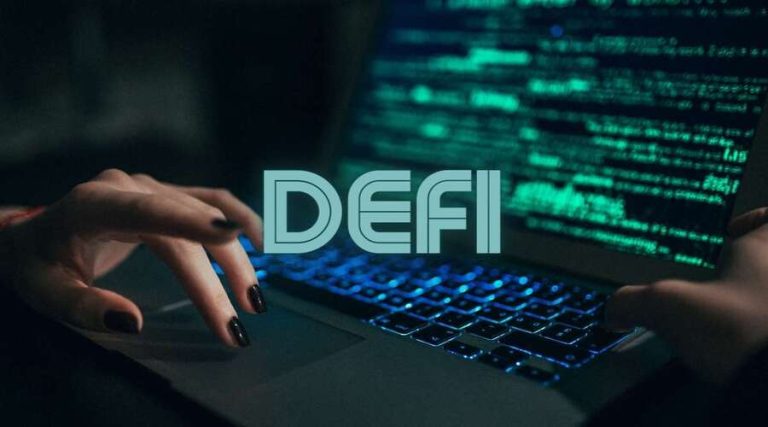
Pump and Dump Tokens in NFTs
Introduction
The world of cryptocurrencies and non-fungible tokens (NFTs) has witnessed a surge in popularity and innovation. However, with the rise of NFTs, concerns about pump and dump tokens within the NFT market have emerged. In this article, we will delve into the connection between cryptocurrencies and NFTs, and explore the phenomenon of pump and dump tokens, shedding light on the implications for investors and the market as a whole.
Understanding Cryptocurrencies and NFTs
What are cryptocurrencies?
Cryptocurrencies are digital or virtual currencies that utilize cryptographic technology to secure transactions and control the creation of new units. Bitcoin and Ethereum are prominent examples of cryptocurrencies.
What are NFTs?
NFTs are unique digital assets that represent ownership or proof of authenticity of a specific item or piece of content. Unlike cryptocurrencies, which are fungible and interchangeable, NFTs are indivisible and distinct, often associated with artwork, collectibles, or virtual assets.
The Intersection of Cryptocurrencies and NFTs
1. Tokenization of NFTs
The intersection of cryptocurrencies and NFTs lies in the tokenization process. NFTs are often built on blockchain technology, leveraging smart contracts to ensure verifiable ownership. Cryptocurrencies like Ethereum are frequently used for transactions and settlements within the NFT ecosystem.
2. NFTs as a store of value
Similar to cryptocurrencies, NFTs can act as a store of value. Unique digital assets with scarcity and demand can appreciate in value over time, attracting investors seeking potential returns on their investments.
The Rise of Pump and Dump Tokens
1. What are pump and dump tokens?
Pump and dump tokens are cryptocurrencies or NFTs that are subject to orchestrated schemes aiming to manipulate their prices. These schemes involve artificially inflating the value of a token through coordinated buying and promotional efforts, followed by a sudden sell-off to unsuspecting investors.
2. Mechanisms of pump and dump schemes
Pump and dump schemes rely on coordinated actions of a group of individuals who accumulate a specific token, create artificial demand through aggressive marketing, and then sell their holdings at a profit once the price reaches a peak. This leaves other investors with devalued assets and potential financial losses.
Pump and Dump Tokens in the NFT Market
1. Vulnerabilities within the NFT ecosystem
The NFT market, while innovative and promising, is susceptible to pump and dump schemes due to its nascent nature and lack of regulation. The absence of comprehensive vetting processes and easily manipulable pricing mechanisms can make NFTs vulnerable to market manipulation.
2. Manipulative tactics used in NFT pump and dump schemes
Manipulators often employ tactics such as false scarcity, celebrity endorsements, and social media campaigns to create artificial hype and FOMO among investors. These tactics can lead to inflated prices and spur irrational buying decisions.
Impact on Investors and the NFT Market
1. Financial risks for unsuspecting investors
Investors who fall victim to pump and dump schemes can experience significant financial losses when the artificially inflated prices of tokens collapse. The lack of transparency and proper disclosure regarding the risks associated with pump and dump tokens further exacerbates these risks.
2. Erosion of trust and credibility in the NFT market
Pump and dump schemes can damage the overall reputation of the NFT market. When investors lose confidence in the integrity of the market due to fraudulent practices, it can hinder its growth, deter new participants, and hamper the development of a sustainable and transparent ecosystem.
Regulatory Challenges and Mitigation Measures
1. Current regulatory landscape
Regulation of the NFT market is still evolving, and the existing frameworks may not explicitly address pump and dump tokens within the NFT ecosystem. Regulators are increasingly exploring ways to protect investors and combat market manipulation.
2. Measures to detect and deter pump and dump tokens
To mitigate the risks associated with pump and dump tokens, regulators can collaborate with industry participants to develop robust monitoring mechanisms, enhance investor education, and establish clear guidelines and enforcement actions against manipulative practices.
Educating Investors and Promoting Due Diligence

1. Raising awareness about pump and dump risks
Educating investors about the risks associated with pump and dump tokens is essential. Public awareness campaigns, investor education initiatives, and transparent disclosure requirements can empower individuals to recognize suspicious activities and protect themselves from falling victim to manipulation.
2. Importance of conducting thorough research
Investors should conduct thorough research before investing in any cryptocurrency or NFT project. Scrutinizing the project’s whitepaper, team backgrounds, community engagement, and market trends can provide valuable insights and help identify potential red flags.
Identifying Pump and Dump Tokens in the NFT Market
1. Characteristics of pump and dump tokens
Understanding the characteristics of pump and dump tokens can help investors identify potential risks. These tokens often exhibit sudden price surges, high volatility, low trading volume outside of manipulation periods, and heavy promotion on social media platforms.
2. Red flags to watch out for
Investors should be wary of tokens that lack a solid underlying value proposition, have little to no community engagement or development progress, or rely heavily on marketing hype and celebrity endorsements. These factors can indicate a higher likelihood of being involved in pump and dump schemes.
Market Manipulation Detection Tools and Techniques
1. Tracking trading patterns and volume
Analyzing trading patterns and volume data can help detect abnormal price movements and identify potential pump and dump activities. Tools and platforms that provide historical trading data, order book analysis, and real-time alerts can assist investors in making informed decisions.
2. Social sentiment analysis
Monitoring social media platforms and sentiment analysis can provide insights into the buzz and sentiment surrounding specific tokens. Unusually high levels of positive sentiment, coupled with aggressive promotional campaigns, may indicate pump and dump schemes.
Investor Strategies to Mitigate Pump and Dump Risks
1. Diversification and risk management
Diversifying one’s investment portfolio across different tokens and asset classes can help mitigate the impact of pump and dump schemes. Implementing risk management strategies, such as setting stop-loss orders and conducting regular portfolio reviews, can protect investors from significant losses.
2. Long-term investment approach
Taking a long-term investment approach can reduce the susceptibility to short-term price manipulations. By focusing on the intrinsic value and potential growth of the NFT projects, investors can avoid getting caught up in the volatility caused by pump and dump schemes.
Building Trust and Transparency in the NFT Market
1. Self-regulation and industry standards
Industry participants, including platforms, creators, and influencers, can play a role in building trust and transparency. Embracing self-regulatory measures, establishing industry standards, and promoting responsible practices can enhance the integrity of the NFT market.
2. Auditing and third-party verification
Third-party audits and verification services can provide an additional layer of assurance for investors. Audits of NFT projects’ smart contracts, tokenomics, and token supply can help identify potential vulnerabilities and ensure compliance with established standards.
Investor Protection and Legal Measures
1. Regulatory frameworks and enforcement
Regulatory bodies are actively working to protect investors in the NFT market. Strengthening existing regulations and enforcing them effectively can help deter pump and dump schemes and provide a safer environment for investors.
2. Investor education and awareness
Educating investors about the risks associated with pump and dump tokens is crucial for their protection. Regulatory agencies, industry organizations, and market participants can collaborate to develop educational campaigns and materials to raise awareness and promote responsible investment practices.
The Role of Market Liquidity
1. Liquidity challenges in the NFT market
The NFT market’s liquidity, or the ease of buying and selling tokens, can influence the susceptibility to pump and dump schemes. Illiquid markets with low trading volumes are more vulnerable to manipulation as it requires less capital to create artificial price movements.
2. Developing liquid and efficient markets
Improving market liquidity through increased trading volumes, the presence of market makers, and the development of robust trading platforms can enhance market efficiency and reduce the potential impact of pump and dump schemes.
Trustworthy NFT Marketplaces and Platforms
1. Due diligence in selecting platforms
Investors should conduct due diligence when selecting NFT marketplaces and platforms. Factors to consider include reputation, security measures, listing requirements, and the platform’s commitment to combating market manipulation.
2. Transparency and reporting mechanisms
Marketplaces and platforms can enhance transparency by implementing reporting mechanisms for suspicious activities, monitoring trading patterns, and providing clear information on token ownership and transaction history. This fosters trust among investors and promotes a more accountable ecosystem.
Collaboration and Self-Regulation
1. Industry collaboration to combat market manipulation
Collaboration among industry participants, including creators, platforms, regulators, and investors, is crucial in tackling pump and dump schemes. Sharing best practices, reporting suspicious activities, and collectively working towards a secure and transparent market can help address the challenges posed by market manipulation.
2. Self-regulation and code of conduct
Establishing a code of conduct within the NFT ecosystem can provide guidelines for market participants and promote ethical practices. Self-regulatory initiatives can help create an environment that discourages market manipulation and fosters investor trust.
Conclusion
The emergence of pump and dump tokens within the NFT market underscores the need for investor caution and industry vigilance. Understanding the connection between cryptocurrencies and NFTs, the vulnerabilities within the NFT ecosystem, and the tactics employed in pump and dump schemes can empower investors to make informed decisions and contribute to the development of a sustainable and trustworthy NFT marketplace.


